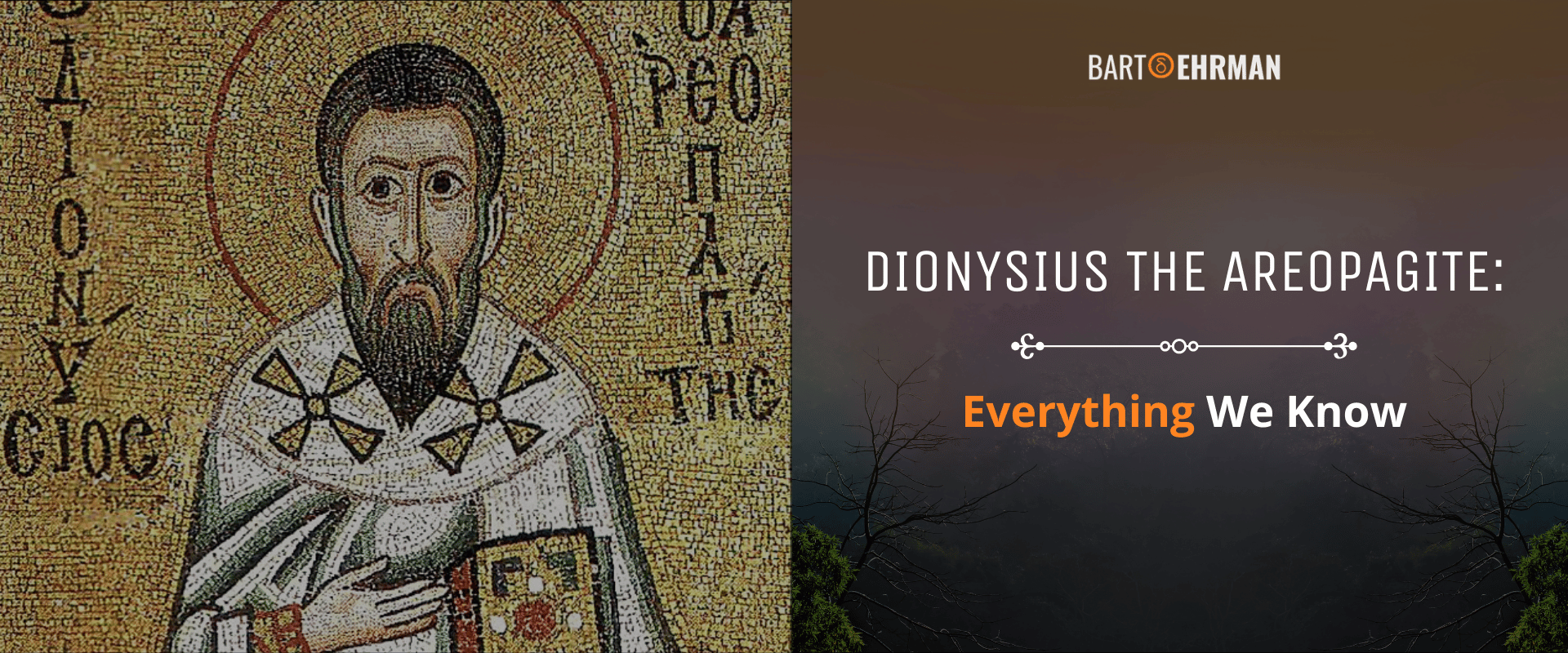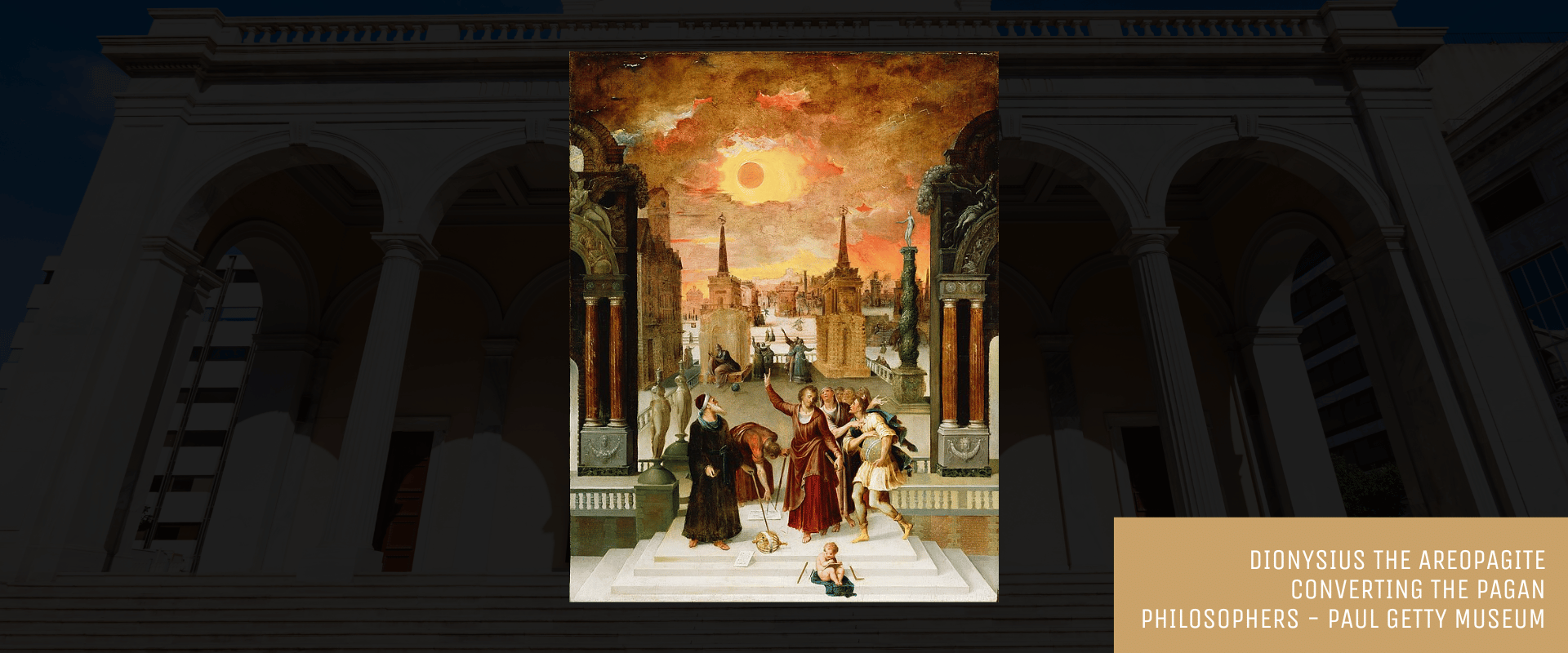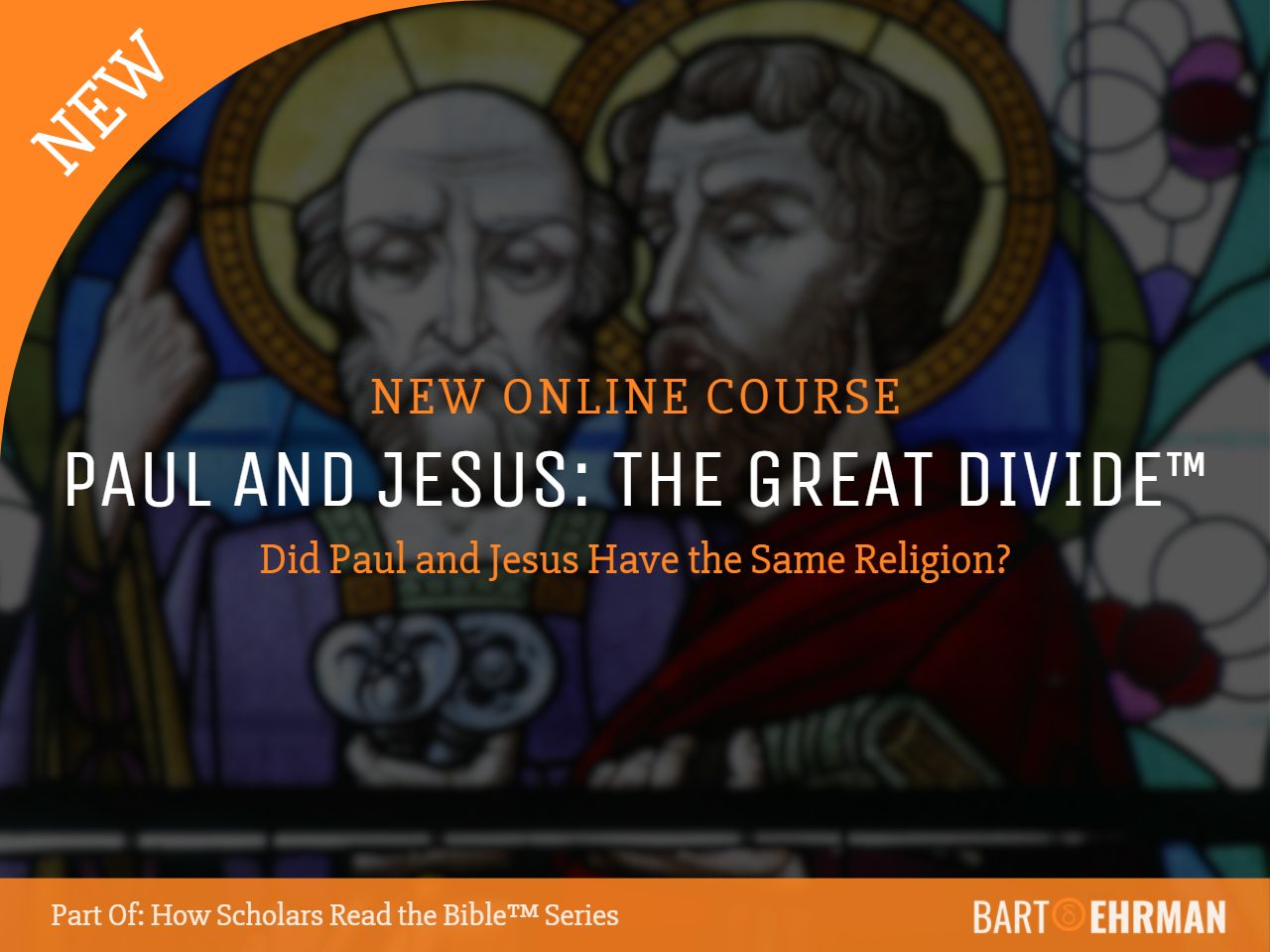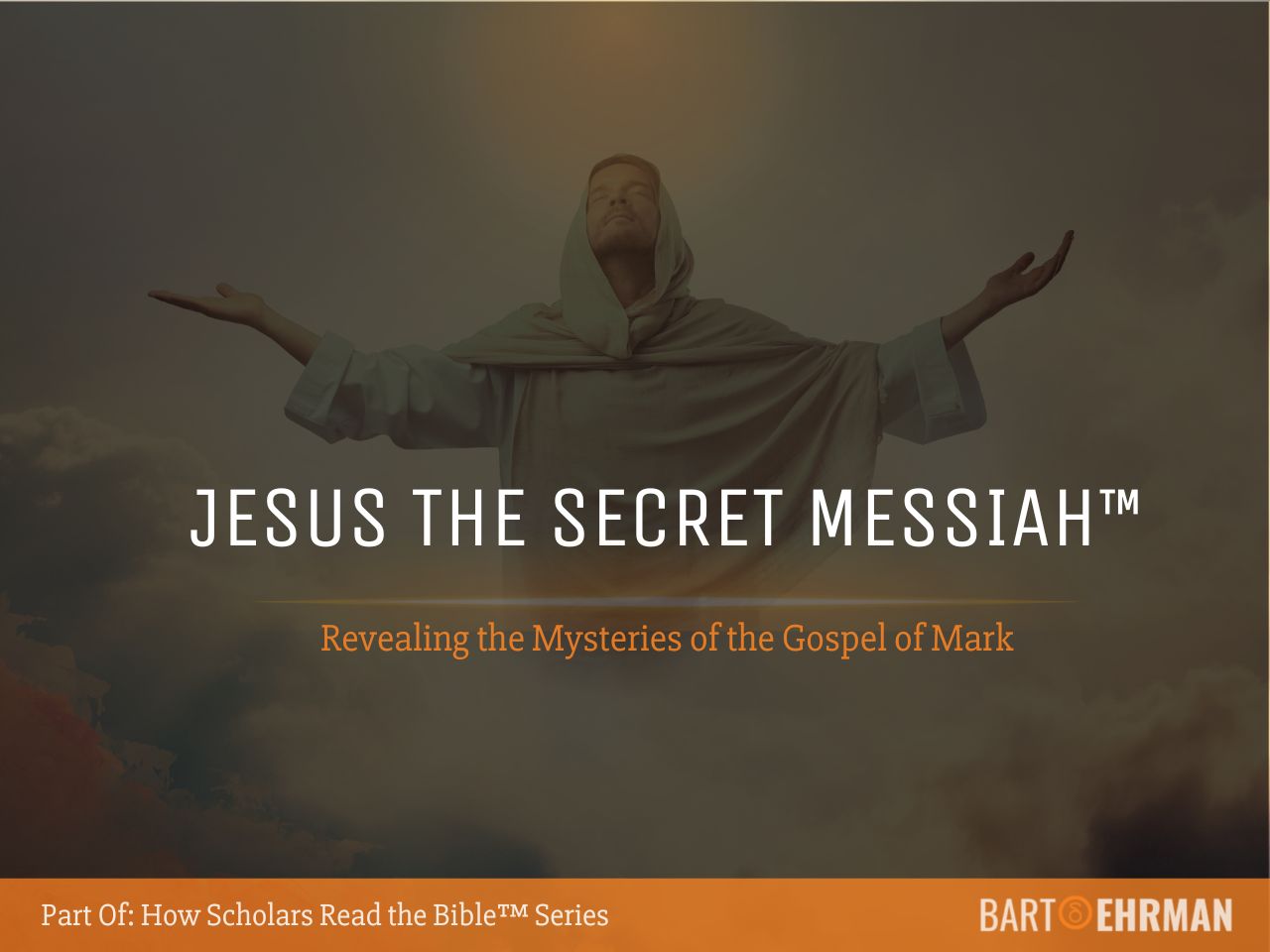Dionysius the Areopagite: Everything We Know

Written by Marko Marina, Ph.D.
Author | Historian
Author | Historian | BE Contributor
Verified! See our guidelines
Verified! See our editorial guidelines
Date written: December 12th, 2024
Edited by Laura Robinson, Ph.D.
Disclaimer: The views and opinions expressed in this article belong to the author and do not necessarily match my own. - Dr. Bart D. Ehrman
Dionysius the Areopagite is one of those enigmatic figures in New Testament history I’ve always wanted to know more about! The Gospels and Acts, which hold special places within the New Testament, recount central events of the nascent Christian movement while introducing cameo figures like Dionysius, who illuminate broader theological themes.
Mentioned only once in the New Testament, he appears in the Book of Acts (17:34) as a convert of Paul’s bold speech at the Areopagus in Athens, the intellectual heart of ancient Greece.
In this article, we’ll explore everything we know about Dionysius the Areopagite. We’ll begin by examining the origins of Christianity in Athens, shedding light on the cultural and religious context of the city following Jesus’ death. Next, we’ll delve into the historical figure of Dionysius as described in the New Testament and later Church tradition.
Finally, we’ll investigate the writings attributed to him — works that, while now considered pseudonymous, have profoundly shaped Christian thought for centuries. Together, these threads will help us untangle the legacy of this mysterious figure at the crossroads of history, religion, and philosophy.
However, before we begin, I want to invite you to check out Bart D. Ehrman’s online course “Paul and Jesus: The Great Divide.” Through 8 captivating lectures, Dr. Ehrman analyses two pivotal figures in the history of Christianity, revealing their similarities but also striking differences!

Christianity in Athens: The Early Days
To understand who Dionysius the Areopagite was, we must take notice of the broader issue of the Christianization of Greece, most notably Athens.
The emergence of Christianity in Greece is intrinsically tied to the missionary journeys of the Apostle Paul, whose work is pivotal in introducing the Christian message to the region. Following Jesus’ death, Paul embarked on extensive travels across the eastern Mediterranean, preaching in urban centers where he could reach diverse audiences.
Bart D. Ehrman, in The Triumph of Christianity, outlines Paul’s typical strategy:
(Affiliate Disclaimer: We may earn commissions on products you purchase through this page at no additional cost to you. Thank you for supporting our site!)
More plausibly, it has been suggested that Paul would attend the local synagogue during services on Sabbath and use the occasion as a visitor in town to proclaim his good news about Jesus the messiah. After making some converts, according to this scenario, Paul would then use the synagogue as a kind of base of operations to begin reaching pagans in the community.
Furthermore, some scholars have suggested that Paul was preaching on the job, using his day work to attract new potential converts!
This pragmatic approach combined Paul’s Jewish heritage with his mission to reach Gentiles, enabling him to establish footholds for Christianity in cities such as Philippi, Thessalonica, Corinth, and Athens.
Athens, as the intellectual and cultural heart of the Greek world, presented both unique opportunities and formidable challenges for early Christianity. Renowned for its legacy as the cradle of Western philosophy, Athens was home to schools of thought established by figures including Plato, Aristotle, and Epicurus.
Christianity, with its proclamation of a crucified and resurrected messiah, would have seemed alien, even subversive, to many Athenians steeped in these traditions.
Nevertheless, Paul’s alleged visit to Athens, recorded in Acts 17, marked an important moment for the spread of Christianity in Greece. His speech at the Areopagus, engaging with Athenian religiosity and philosophy, symbolized the nascent faith’s willingness to engage with and challenge the intellectual traditions of the ancient world.
Beyond Athens, as Raymond Van Dam notes, early Christianity in Greece developed unevenly, reflecting the distinct social and cultural dynamics of its regions.
In Macedonia, Paul found receptive audiences in cities like Philippi and Thessalonica, which were key stops along the Via Egnatia, a major Roman trade route.
These cities became vital centers for the early Christian movement, bolstered by Paul’s letters and his connections with their fledgling communities. In Corinth, Paul established one of his most significant congregations, grappling with issues of unity, morality, and theological disputes that are vividly documented in his epistles.
By contrast, Athens, though culturally prestigious, appeared slower to embrace Christianity, with only sporadic evidence of a substantial Christian presence in its early years.
Christianity’s growth in Greece was shaped by the broader socio-political realities of the Roman Empire. Greek cities like Corinth, Athens, and Thessalonica were integrated into a vast imperial network that facilitated the exchange of ideas but also exposed Christian communities to sporadic persecution.
By the 4th century, following Constantine’s conversion and the Edict of Milan, Christianity gained imperial support, accelerating its spread throughout Greece. Imperial patronage under Constantine and his successors catalyzed the Christianization of Greek cities. Public spaces and temples, such as the Parthenon, were repurposed for Christian worship.
Finally, after the sudden death of the last pagan emperor in 363 C.E., there was no going back: Greece with its rich philosophical and cultural tradition was on its way to become another Christianized part of the Roman Empire!
With this broader historical and cultural background in mind, we can now turn our attention to Dionysius the Areopagite, exploring his role within the early Christian community in Athens and the enduring legacy attributed to his name.
Who Was Dionysius the Areopagite?
Dionysius the Areopagite appears in the Acts of the Apostles (17:34) as a key figure in the narrative of Paul’s missionary work in Athens.
His name is mentioned after Paul’s speech at the Areopagus, where we are told that “some of them joined him and became believers, including Dionysius the Areopagite and a woman named Damaris, and others with them.”
The label “Areopagite” suggests that Dionysius was a member of the Areopagus council, a distinguished judicial and administrative body linked to Athens’ intellectual and political traditions. This association places Dionysius among the city’s elite, possibly well-versed in the philosophical currents of the time.
The story of his conversion illustrates that the early Christian message of Jesus’ redemptive death and resurrection resonated with individuals from diverse social backgrounds. Scholars such as Edwin A. Judge and Wayne Meeks have explored this notion in extenso.
His conversion, alongside Damaris and others, signals the early Christian message’s capacity to resonate with individuals from diverse social and intellectual backgrounds.
Paul’s speech leading to Dionysius’ conversion is one of the most famous episodes in Acts, showcasing Paul’s rhetorical dexterity in engaging a sophisticated audience. Summoned by the Athenians for his “strange” teaching about Jesus and the resurrection, “Paul” crafts a speech that walks a fine line between critique and accommodation.
Does the Book of Acts convey Paul’s verbatim words here? Most scholars would argue otherwise. These speeches are likely a blend of earlier oral traditions and the theological tendencies of the author of Acts, who, like many ancient biographers, was accustomed to crafting speeches for the protagonists to suit the narrative’s purpose and context. For pragmatic reasons, however, we will continue to refer to this as Paul’s speech.
He begins by commending the Athenians for their religiosity, cleverly using their altar to an “Unknown God” as a bridge to introduce the Christian God. Paul then emphasizes God’s transcendence, describing him as the creator and sustainer of all things, not confined to temples or dependent on human offerings. The climax of the speech is Paul’s call to repentance which is rooted in God’s appointed judgment through Jesus.
Yet, as C.K. Barrett asserts in his Critical and Exegetical Commentary on Acts, this speech is unlikely to represent a verbatim transcript of Paul’s words. Rather, it reflects Luke’s theological and narrative aims, providing an idealized depiction of Paul’s engagement with the Athenian elite.
This perspective aligns with the early Church’s strategy (e.g. Justin Martyr) of presenting its message as both compatible with and superior to Greco-Roman intellectual traditions.
Joseph Fitzmyer, in his Commentary on Acts, similarly highlights Paul’s strategic use of Greek cultural references, such as quotes from Aratus and Epimenides, to establish common ground while subtly challenging Athenian idolatry.
He even notes:
The words quoted come from Aratus and from no one else, even though one can point to similar statements in other Greek writers. The quotation from Aratus may be part of the information that Luke has inherited from his Pauline source about this discourse in Athens.
Dionysius’ conversion, in this context, is particularly significant. As a member of the Areopagus, his embrace of Christianity represents more than just a personal transformation; it signals a crack in the intellectual and cultural bastion of Greco-Roman paganism.
However, the broader reaction to Paul’s message was mixed. While some Athenians mocked the concept of resurrection, others expressed curiosity, and a handful, like Dionysius and Damaris, became followers.
The narrative suggests that Paul’s mission in Athens was only moderately successful, but it underscores the universal reach of the Christian message.
Did You Know?
Lorenzo Valla: The Renaissance Detective
Besides being the first to question the authenticity of the Corpus Areopagiticum (see below), Lorenzo Valla cemented his place in history with another bold exposé: His investigation of the Donation of Constantine. This document, purportedly written by Emperor Constantine himself, claimed to grant the Pope vast territorial and political authority over the Western Roman Empire.
For centuries, the Donation had been wielded as a powerful tool to legitimize papal supremacy. But Valla, armed with his sharp intellect and a passion for truth, meticulously analyzed the text in the 15th century and declared it a forgery. His discovery sent shockwaves through the ecclesiastical world, shaking one of the medieval Church's foundational claims to power.
What made Valla’s revelation so compelling was his application of humanist techniques to scrutinize the document. By examining the Latin used in the Donation, Valla demonstrated that it contained anachronistic phrases and vocabulary that simply did not exist in Constantine's time.
In a way, his linguistic detective work was the Renaissance equivalent of carbon dating! While his findings didn’t immediately dismantle the Church’s authority, they marked a turning point in critical historical inquiry and paved the way for the rise of modern textual criticism.
Later Church traditions expanded upon the figure of Dionysius the Areopagite, elevating his role in the nascent Christian community of Athens. According to Dionysius, the second-century bishop of Corinth, Dionysius the Areopagite became the first bishop of Athens, a claim recorded by Eusebius of Caesarea in his Ecclesiastical History (3.4.10; 4.23.3).
However, such claims must be approached with caution from a historical perspective. The notion of individual bishops presiding over specific congregations in the first decades after Jesus’ death is problematic, as this level of ecclesiastical organization likely developed much later.
Most scholars agree that the structured hierarchy of bishops, as evidenced in sources like the Pastoral Epistles or the letters of Ignatius of Antioch, represents a second-century development rather than a feature of the earliest Christian communities.
In other words, the tradition of Dionysius as Athens’ first bishop reflects the later Church’s effort to provide apostolic legitimacy to its leadership structures and local histories, framing its early development in continuity with the age of the apostles.
Over time, Dionysius the Areopagite would also become the subject of a fascinating conflation. By the late 5th century, a Christian Neoplatonic author adopted his name, producing works that deeply influenced medieval Christian theology.
While the historical Dionysius remains an enigmatic figure, we’ll delve into the intriguing legacy of his Neoplatonic namesake in the next section. For now, let’s just say that the real Dionysius probably wasn’t penning treatises on celestial hierarchies in his spare time.
Pseudo-Dionysius and the Neoplatonic Writings
Despite having just a cameo appearance in Acts 17, Dionysius the Areopagite’s name carried enough weight to inspire one of the most enduring literary attributions in early Christian history.
As it turns out the Corpus Areopagiticum — a collection of theological writings including The Divine Names, The Mystical Theology, The Celestial Hierarchy, and The Ecclesiastical Hierarchy — was attributed to him centuries after his mention in the New Testament.
These works explore the nature of God, celestial and ecclesiastical hierarchies, and mystical union with the divine, blending Christian theology with Neoplatonic philosophy. For centuries, the belief that a famous pagan convert from Athens was the author gave them significant authority.
However, modern scholarship has thoroughly debunked this claim, attributing them instead to an anonymous late antique writer now known as “Pseudo-Dionysius.”
The false attribution of these writings to the historical Dionysius fits into a broader pattern in early Christian literature. As Bart D. Ehrman highlights in his study Forgery and Counterforgery, early Christian authors often adopted the names of apostles or other figures of authority to lend their works greater credibility.
It was an age where claiming, for instance, Pauline or apostolic authorship was akin to slapping a “bestseller” sticker on your manuscript. The Corpus Areopagiticum exemplifies this trend. These works seemed to demand the name of an authoritative figure to ensure their acceptance and influence within the Church.
The Renaissance scholar Lorenzo Valla was among the earliest to question the authenticity of the Areopagitic works. Other scholars, including Erasmus, offered other evidence firmly establishing the scholarly communis opinio. Let’s take a look at some of it!
The anachronistic nature of the Corpus Areopagiticum is one of the most compelling arguments against its 1st-century origin. The writings are steeped in Neoplatonism, particularly the ideas of Proclus (412-485 C.E.), a pagan philosopher whose works significantly influenced their content.
Another significant issue lies in the depiction of ecclesiastical organization within the writings. The Corpus Areopagiticum describes a highly developed Church structure, with a clear hierarchy of bishops, priests, and deacons, as well as intricate liturgical practices. This level of institutional organization was unknown in the 1st century.
Moreover, the presence of the monastic terminology is also a revealing fact. “Dionysius” refers to monks and their roles, yet, we know that monasticism as a developed Christian phenomenon only emerged in the 4th century with figures such as Pachomius and Anthony the Great.
Based on these and other arguments, Paul Rorem, in his Commentary on Pseudo-Dionysius, concludes:
[These works] were falsely attributed to Dionysius the Areopagite, the Athenian who was converted to Christianity by St. Paul, according to Acts 17. They were actually written some five hundred years later, although we do not know precisely when or where. If the classics of mysticism are said to have 'neither birthday nor native land' in that they transcend such details, the phrase is literally descriptive of our ignorance about the Dionysian corpus. We do not know its birthday, its native land, or its author. The personal identity of the writer is still a mystery, and he is known only and awkwardly as Pseudo-Dionysius, or Dionysius the Pseudo-Areopagite.
In the end, the Corpus Areopagiticum reflects the ingenuity of its anonymous author, who combined Christian theology with Neoplatonic philosophy to produce a work of profound influence. However, the real Dionysius the Areopagite of Acts 17 likely had nothing to do with these writings.

Conclusion
The story of Dionysius the Areopagite provides a fascinating lens through which we can explore the intersections of history, theology, and intellectual tradition in the early Christian era.
As a figure mentioned briefly in Acts, Dionysius represents the early Christian mission’s ability to resonate across social, religious, and intellectual boundaries. Later traditions, which elevated him to the status of Athens’ first bishop and linked his name to the Corpus Areopagiticum, reflect the enduring importance of establishing apostolic legitimacy in the evolving identity of the Christian Church.
These traditions, however, reveal more about the Church’s efforts to connect its present to its apostolic past than about the historical Dionysius himself. And who was Dionysisus the Areopagite? Well, beyond the scant information present in Acts, we have no idea. History doesn't always give us what we want, but it sure keeps us coming back for more.


